An exhibition by artist Cristóbal Valecillos in Los Angeles invoked the Dancing Devils of Yare, a 400-year old Venezuelan tradition celebrating life, the triumph of good over evil, and renewal. His provocative interpretation of the diablo masks, hand-sculpted from repurposed waste materials, takes aim at culture and consumption in the US, a plea for overcoming.
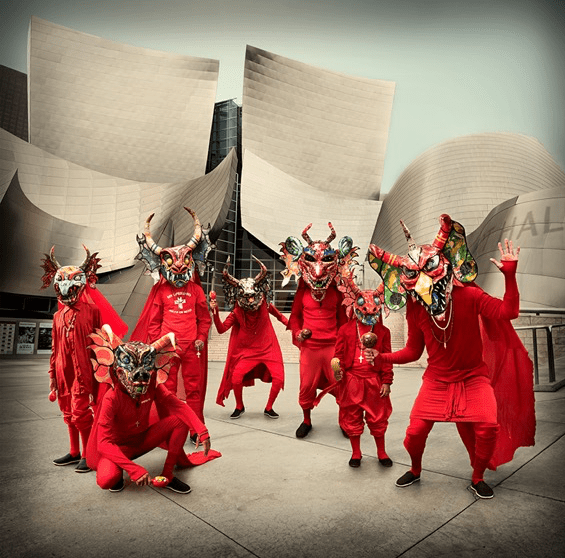

A 21st Century Interpretation of Yare: One More Dance
In a recent exhibition in Los Angeles, Artist Cristóbal Valecillos integrated/juxtaposed the 400-year old Venezuelan tradition of Los Diablos de Yare with the consumer culture of the US. He created eight handcrafted devil masks using re-purposed waste materials, that dissect modern technology, culture, religion, and consumption. The show was part of the Getty’s Pacific Standard Time LA/LA Initiative.
Examples include the Care Devil (Matasano or ‘Quack’) who represents the toxic and harmful ingredients in many baby care products for sale in the US and banned in Europe; and the Tech Devil (Solo), who points to the addictive aspects of technology that deprive people from interacting with the real world. By juxtaposing these traditional devils as representing cultural excess and dangerous threats from modern conveniences, Valecillos calls for a renewal of life by overcoming in the tradition of the Dancing Devils at Corpus Christi.
STORY: Postcommodity’s ‘Repellent Fence’ Land Art Spans the U.S. Border
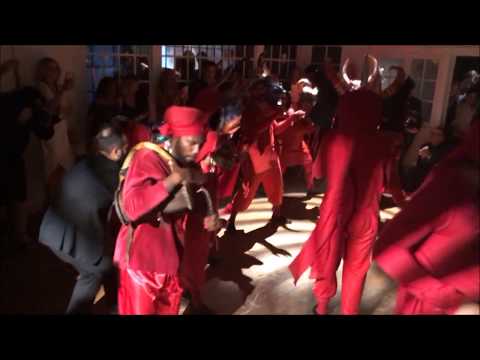
Watch this video on YouTube
The Devils of Yare – One More Dance by Cristóbal Valecillos
The Dancing Devils of Yare is a religious festival celebrated on the day of the Feast of Corpus Christi, in San Francisco de Yare, in the central coastal region of Venezuela’s Miranda state. They have transformed the Roman Catholic celebration commemorating the presence of Christ in the Sacrament, to incorporate its African diaspora culture, mixed with Indigenous elements such as the maracas used by the devils.
STORY: Tibetan Skeleton Dance: Cemetery Protectors of Truth
Yare One More Dance – Cristobal Valecillos
The tradition, passed on through the generations, goes back almost 400 years. The custom was at first rejected by church officials, then later tolerated, and eventually celebrated.
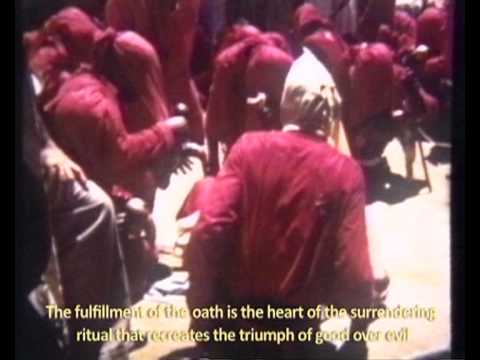
Watch this video on YouTube
Venezuela’s Dancing Devils of Corpus Christi – UNESCO
On Thursday of Corpus Christi (nine weeks after Holy Thursday), groups of adults, young men and children from Yare dress up in red costumes and the masks and perform a ritual dance on the streets, to local string and percussion instruments to the rhythm of corríos (octosyllabic musical poems). The devils have a hierarchy, represented by their masks and the number of horns they have. The diablos dance backwards in penitence as an official of the Catholic Church carries forth the Blessed Sacrament, and worshipers carry maracas to ward off evil spirits.
STORY: Caribbean Garífuna: Masked Warriors Dance into the New Year
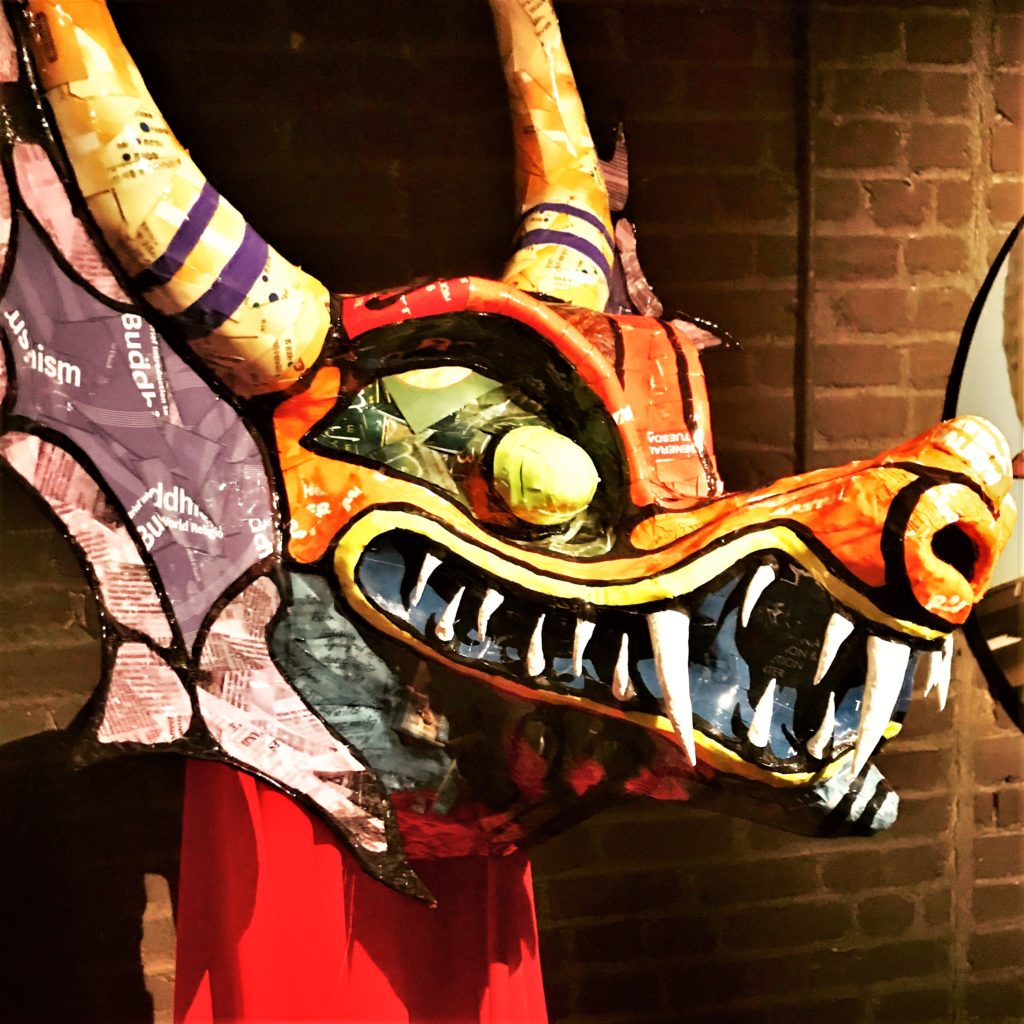

The devils wage a battle with guardians, dancing to the rhythm of the bamba, a more reverential music style. Then they surrender to the Eucharist and fall to their knees in front of the church to blessings from the priest, a symbolic victory of good over evil. Music and dance continues, while those dressed as devils visit the houses of some devils who have since passed away. Women can dance too, but not in the street with the men.
STORY: Krampus, Wild Nature Spirit, the Christmas Daemon
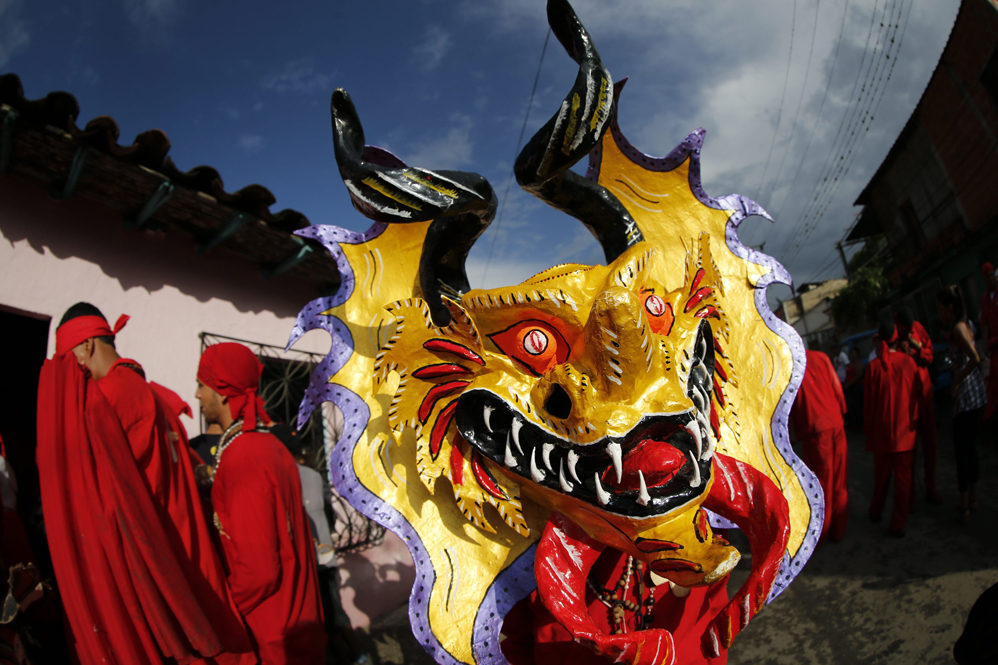

The dancers or promeseros (promise-keepers) are lifelong members of the Sociedades del Santisimo confraternity that transmit the historical memory and ancestral traditions. Members craft their own devil masks, which are worn with crosses, scapulars and blessed palm leaves. Dancers also use bells, handkerchiefs and strips of ribbon as protection from evil spirits. Women oversee the spiritual preparation of children, organize the stages of the ritual, prepare food, provide support for the dances, and raise altars along the procession route; in recent years, some communities have begun to welcome them as dancers. The practice is steeped in creativity, organization and faith, and promotes a strong sense of communal and cultural identity.
There are similar such traditions in Naiguata and Chuao, as well as other communities that include 11 brotherhoods with more than 5,000 people.
In 2002 the Venezuelan government declared the tradition national cultural heritage, and in 2008 it nominated it to UNESCO to be recognized as a World Heritage Site, for Intangible Culture, inscribed in 2012.
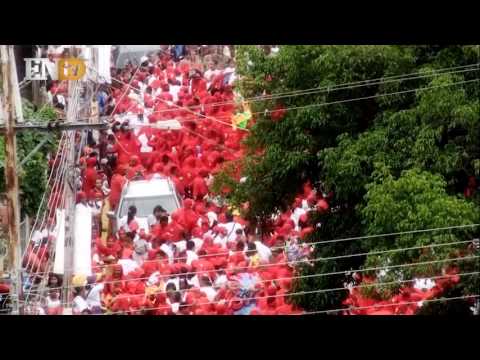
Watch this video on YouTube
Festival Los Diablos de Yare, en Venezuela
Cristóbal Valecillo’s distinguished career includes, art direction, music videos, consumer products, commercials and photography. His fine art practice utilizes recycled and repurposed materials to create provocative environments, which he then photographs.
Updated 4 May 2021




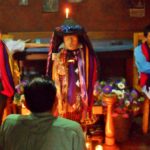
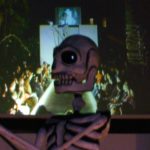
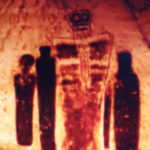






Pingback: Postcommodity’s ‘Repellent Fence’ Land Art Spans the U.S. Border